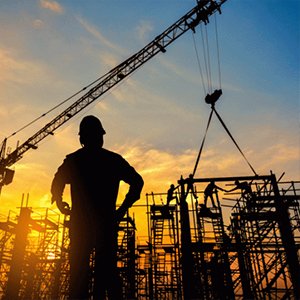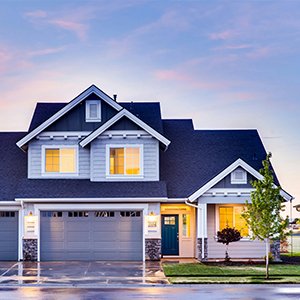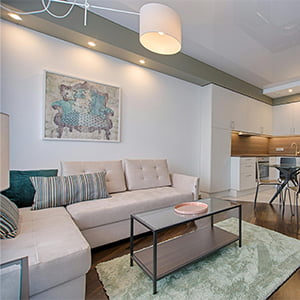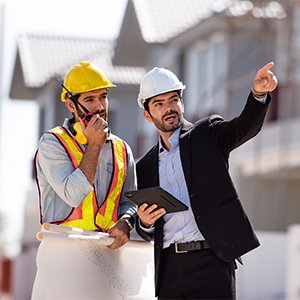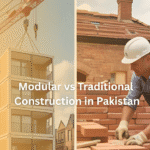
Modular vs Traditional Construction in Pakistan – Which Is Faster & More Cost-Effective?
June 24, 2025
What to Expect During Site Supervision – Homeowner’s Checklist
July 1, 2025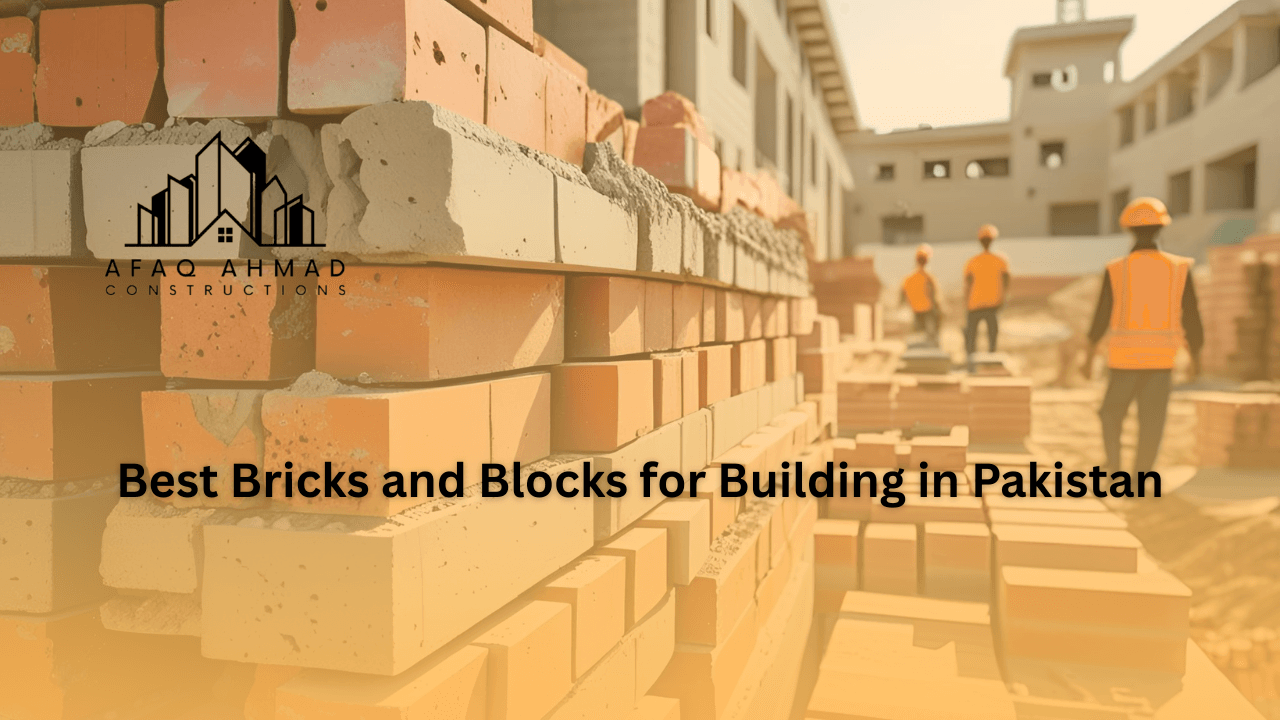
The construction industry in Pakistan is buzzing with activity, fueled by a projected real estate growth rate of over 5% annually from 2025 to 2028. With Lahore’s housing deficit nearing 10 million units and premium societies like DHA Lahore, Bahria Town, and Lahore Smart City leading the charge, choosing the right building materials is more critical than ever. At Afaq Ahmad Constructions, we recognize that bricks and blocks form the backbone of any structure, influencing durability, cost, and aesthetics. This blog explores the best bricks and blocks for building in Pakistan, delving into their pros and cons to help you make an informed decision for your next project.
The Importance of Choosing the Right Bricks and Blocks
Bricks and blocks are the foundational elements of homes, from 5 Marla houses to luxurious 1 Kanal villas. In 2025, factors like rising material costs (e.g., cement at PKR 1,060 per bag), climate challenges (40°C summers and monsoons), and regulatory updates (e.g., Green Building Code 2023) demand materials that balance strength, affordability, and sustainability. Lahore’s seismic zones, as outlined in the Pakistan Building Code (PBC) 2021, further emphasize the need for quality. Let’s examine the top options available in Pakistan and their advantages and drawbacks.
Top Bricks for Construction in Pakistan
1. Burnt Clay Bricks (A-Class/Awwal)
- Description: Made from molded wet clay fired in kilns, these are the most common bricks in Pakistan, known for their reddish hue and durability.
- Pros:
- Strength: A-Class bricks offer excellent compressive strength (1800-3000 PSI), ideal for load-bearing walls and foundations, as noted in our quality assurance discussions.
- Durability: Can last 50-100 years with proper maintenance, perfect for Lahore’s colonial bungalows (as seen in our bungalow image).
- Thermal Performance: Provides natural insulation, reducing heat gain in summer.
- Cost-Effective: Priced at PKR 11-20 per brick in 2025, making them affordable for residential projects like 10 Marla homes.
- Cons:
- Seepage Risk: Poor-quality batches may absorb moisture, leading to dampness, a concern in monsoon-prone areas.
- Environmental Impact: Kiln firing consumes topsoil and fuel, contributing to carbon emissions.
- Labor-Intensive: Requires skilled masonry, increasing labor costs (PKR 450/day).
- Best For: Load-bearing walls, foundations, and traditional homes in DHA Lahore.
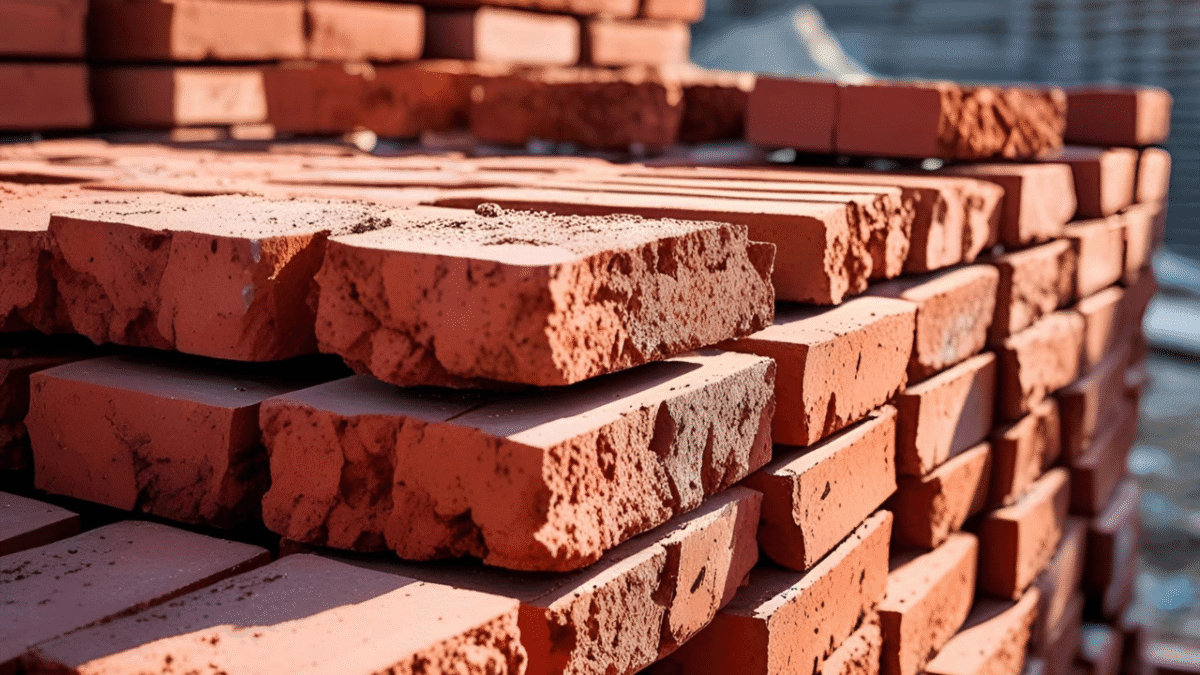
2. Fly Ash Bricks
- Description: Made from fly ash, cement, sand, and water, these eco-friendly bricks are gaining popularity for their smooth finish.
- Pros:
- Sustainability: Utilizes industrial waste, aligning with the Green Building Code 2023, a focus in our sustainability blog.
- Lightweight: Easier to handle, reducing structural load, ideal for multi-story buildings in Lahore Smart City.
- Cost: Priced at PKR 10-15 per brick, slightly cheaper than A-Class bricks.
- Fire Resistance: Enhances safety, meeting PBC 2021 standards.
- Cons:
- Lower Strength: Less suitable for heavy load-bearing structures compared to burnt clay bricks.
- Availability: Limited production in rural areas, affecting supply in places like Model Town.
- Aesthetic Limitation: Uniform gray color lacks the charm of red bricks.
- Best For: Partition walls, eco-friendly homes, and budget-conscious projects in Bahria Orchard.
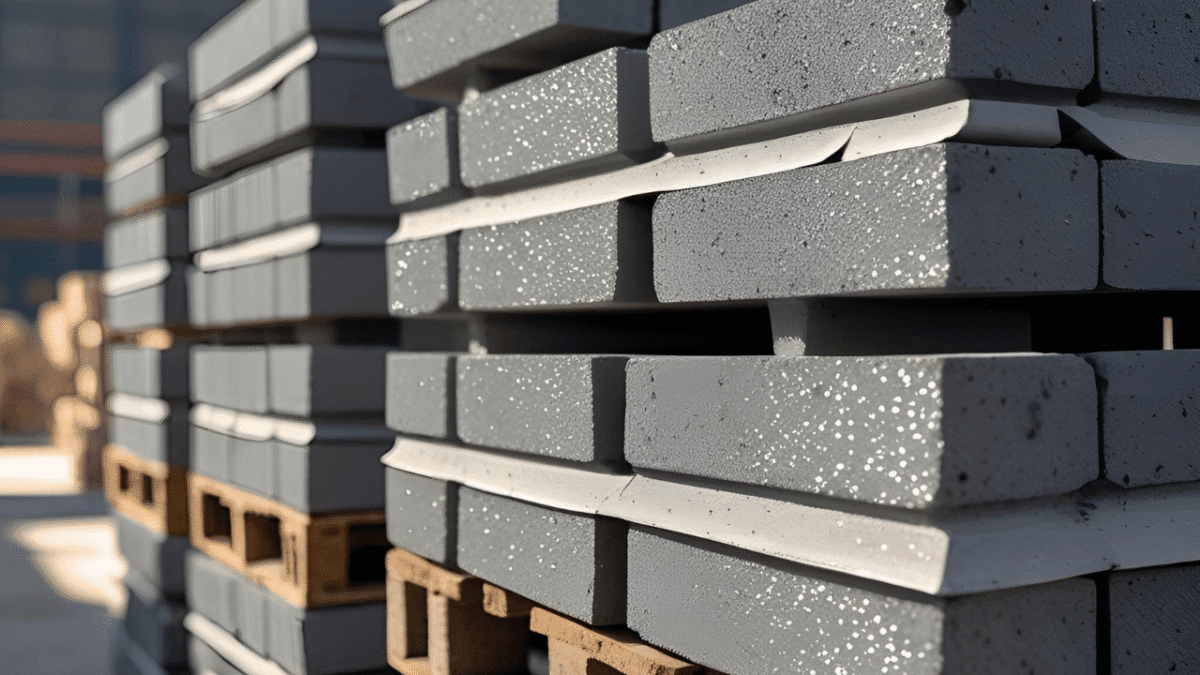
3. Sand Lime Bricks (Calcium Silicate)
- Description: Composed of sand, lime, and fly ash, molded under pressure and cured with heat.
- Pros:
- Aesthetic Appeal: Smooth, gray finish suits modern designs, enhancing villas in Lake City (our villa image).
- Strength: Comparable to A-Class bricks, suitable for structural use.
- Low Maintenance: Resistant to weathering, reducing repair costs over time.
- Cons:
- Higher Cost: Priced at PKR 15-25 per brick, reflecting production complexity.
- Thermal Insulation: Less effective than clay bricks, requiring additional insulation in Lahore’s heat.
- Brittleness: Can crack under seismic stress if not reinforced.
- Best For: Non-load-bearing walls, decorative facades, and urban homes.
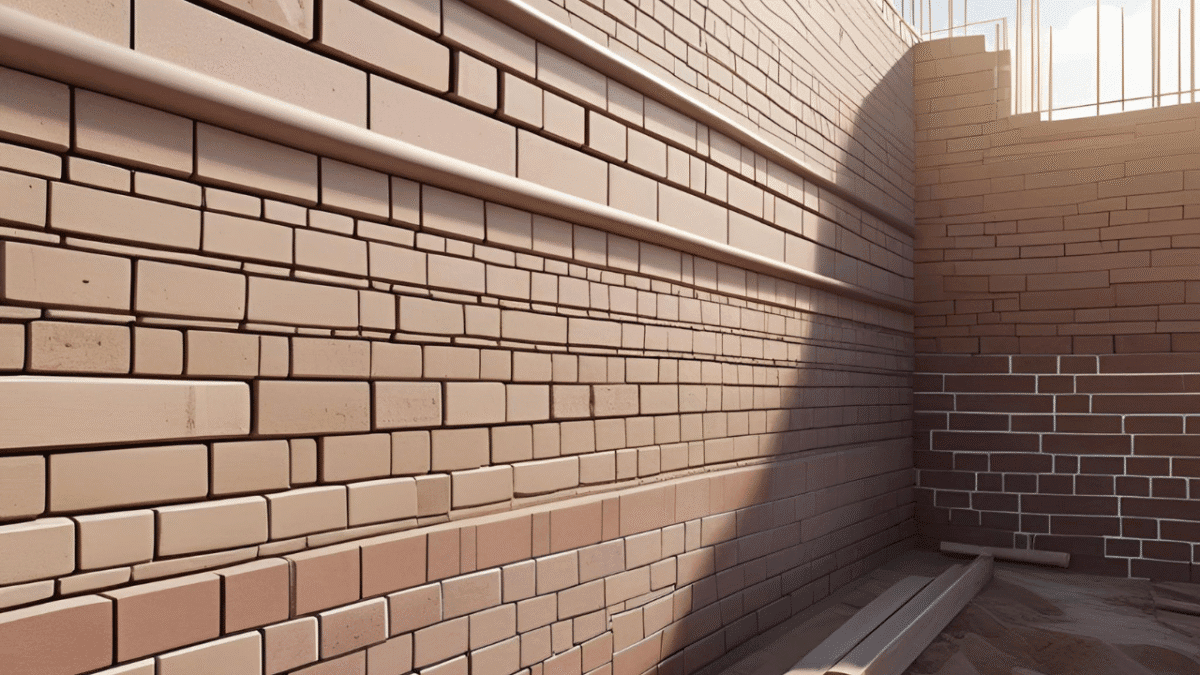
Top Blocks for Construction in Pakistan
1. Concrete Blocks (Cement Blocks)
- Description: Made from cement, sand, and aggregates, available in solid or hollow forms, widely used in large structures.
- Pros:
- Strength: High load-bearing capacity (up to 2500 PSI for branded blocks), perfect for foundations and retaining walls, as per our regulations blog.
- Durability: Resists harsh weather, lasting 100+ years with proper care.
- Cost-Effective: Priced at PKR 30-75 per block, cheaper per unit area than bricks due to larger size.
- Speed: Faster installation reduces construction time by 20-30%, aligning with our timeline blog.
- Cons:
- Aesthetic Limitation: Plain look requires cladding or plastering (adding PKR 50,000-100,000), less appealing than bricks (our luxury home image).
- Thermal Insulation: Lower than bricks, necessitating extra insulation for energy efficiency.
- Weight: Heavier versions increase foundation costs on soft soils, a concern in DHA filled plots.
- Best For: Commercial buildings, high-rise projects, and infrastructure in Lahore Smart City.
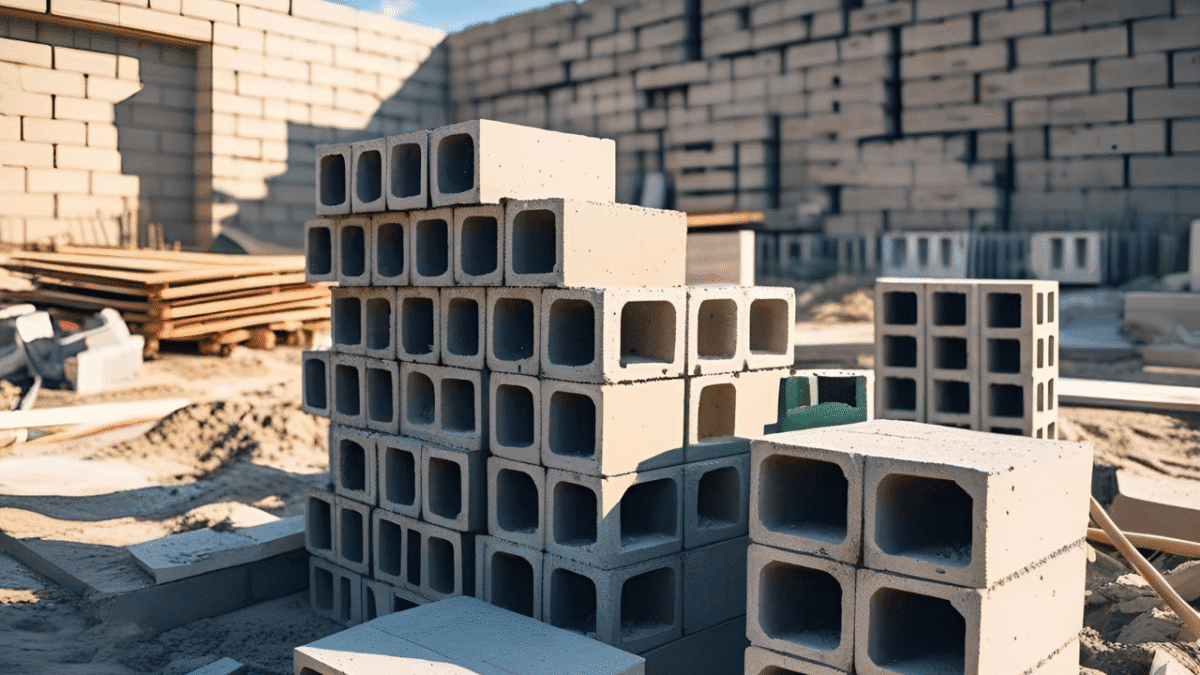
2. Autoclaved Aerated Concrete (AAC) Blocks
- Description: Lightweight blocks made from cement, lime, water, and an aeration agent, cured in autoclaves.
- Pros:
- Lightweight: Reduces dead load, ideal for multi-story homes in Bahria Town.
- Insulation: Excellent thermal and sound insulation, cutting energy bills by PKR 30,000-50,000 annually.
- Eco-Friendly: Low carbon footprint, supporting sustainable trends in 2025.
- Cost Savings: Priced at PKR 100-150 per block, but saves on labor and material due to ease of use.
- Cons:
- High Initial Cost: Premium price reflects manufacturing process, unsuitable for budget projects.
- Lower Strength: Not ideal for load-bearing walls without reinforcement.
- Fragility: Prone to cracking if mishandled during construction.
- Best For: Energy-efficient homes, partition walls, and modern designs in DHA Lahore.
3. Hollow Clay Blocks
- Description: Clay-based blocks with hollow cavities, offering a balance between bricks and concrete blocks.
- Pros:
- Insulation: Hollow design improves thermal efficiency, reducing AC costs in Lahore’s summers.
- Lightweight: Easier to transport and install, saving labor costs.
- Cost: Priced at PKR 25-35 per block, competitive with fly ash bricks.
- Cons:
- Limited Strength: Not suitable for load-bearing structures, restricting use to non-structural walls.
- Moisture Absorption: Hollow spaces can trap water, risking dampness if not sealed.
- Availability: Less common in rural areas, affecting supply chains.
- Best For: Partition walls, temporary structures, and eco-friendly builds.
Comparative Analysis: Bricks vs. Blocks
- Speed: Blocks (especially AAC and concrete) install 20-30% faster due to larger sizes, while bricks require meticulous laying.
- Cost: Bricks (PKR 10-25) are cheaper per unit, but blocks (PKR 30-150) cover more area, balancing costs for larger projects.
- Durability: Bricks offer longevity (50-100 years) with proper curing, while blocks like concrete can exceed 100 years with maintenance.
- Sustainability: Fly ash bricks and AAC blocks lead in eco-friendliness, reducing environmental impact compared to traditional clay bricks.
- Aesthetics: Bricks provide timeless appeal, while blocks need finishing for visual enhancement.
Pros and Cons Summary
- Bricks:
- Pros: Strength, durability, thermal performance, aesthetic versatility.
- Cons: Environmental impact, seepage risk, labor-intensive.
- Blocks:
- Pros: Speed, cost-effectiveness per area, insulation, sustainability options.
- Cons: Aesthetic limitations, variable strength, higher initial costs for premium types.
Factors to Consider When Choosing
- Project Type: Use A-Class bricks for load-bearing walls and concrete blocks for foundations; AAC blocks for energy-efficient partitions.
- Budget: Opt for fly ash bricks or hollow clay blocks for cost savings; avoid AAC for tight budgets.
- Location: In Lahore’s seismic zones, prioritize reinforced concrete blocks; in humid areas, choose moisture-resistant bricks.
- Aesthetics: Select sand lime bricks or stone bricks for luxury homes (our bungalow image); clad concrete blocks for appeal.
- Regulations: Ensure compliance with PBC 2021 and Green Building Code 2023, as emphasized in our regulations blog.
2025 Market Trends and Costs
- Price Trends: Brick prices range from PKR 12-16 per unit due to inflation, while block prices (PKR 30-150) reflect raw material and transport costs.
- Demand: Rising construction in Lahore drives demand for sustainable options like fly ash and AAC blocks.
- Supply: Local kilns in Punjab (e.g., Lodhran, Multan) keep brick prices lower, while block supply lags in rural areas.
Visualizing Your Choice
Imagine a 10 Marla home in DHA Lahore, its A-Class brick walls standing firm (our villa image), complemented by AAC block partitions for insulation. Contrast this with a Bahria Town project using concrete blocks for a robust foundation (our roofing image), finished with sand lime bricks for a modern look. These combinations, crafted by Afaq Ahmad Constructions, showcase the best of both worlds.
The Role of Afaq Ahmad Constructions
At Afaq Ahmad Constructions, we guide you through this decision:
- Material Expertise: We source high-quality A-Class bricks, fly ash, and AAC blocks, meeting 2025 standards.
- Quality Assurance: Rigorous testing ensures durability, from soil compatibility to seismic resistance.
- Cost Management: We optimize budgets, leveraging local suppliers for cost-effective solutions.
Visit https://afaqahmadconstructions.com/ to start your project with the best materials!
Conclusion
Choosing the best bricks and blocks for building in Pakistan in 2025 depends on your project’s needs. A-Class burnt clay bricks excel in strength and tradition, while fly ash bricks offer eco-friendliness. Concrete blocks provide durability and speed, and AAC blocks lead in insulation and sustainability. Weighing their pros and cons—cost, durability, and aesthetics—against Lahore’s climate and market trends ensures a smart investment. Partner with Afaq Ahmad Constructions to select and implement the ideal materials for your home, whether in DHA, Bahria Town, or beyond. Contact us today to build with confidence!

